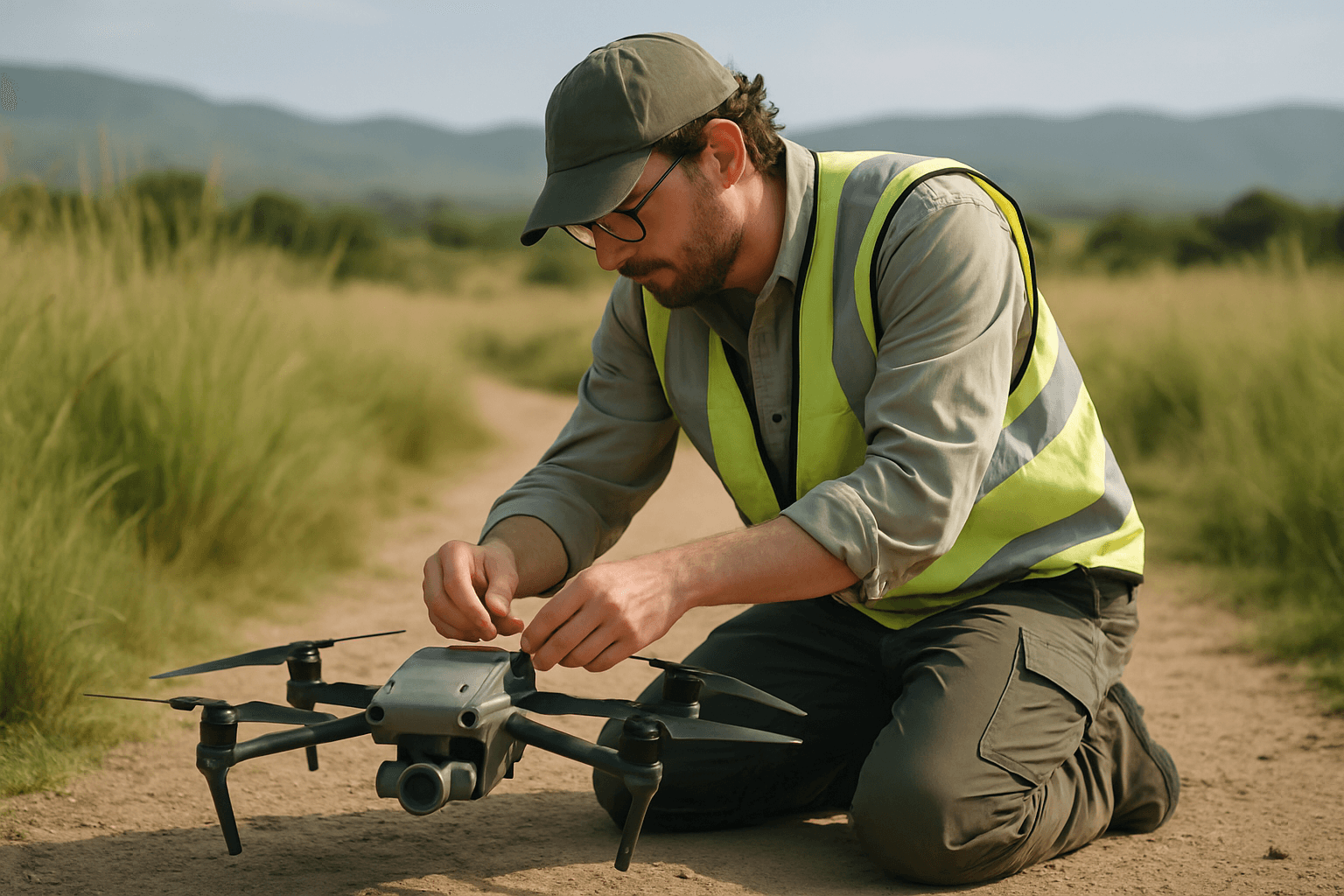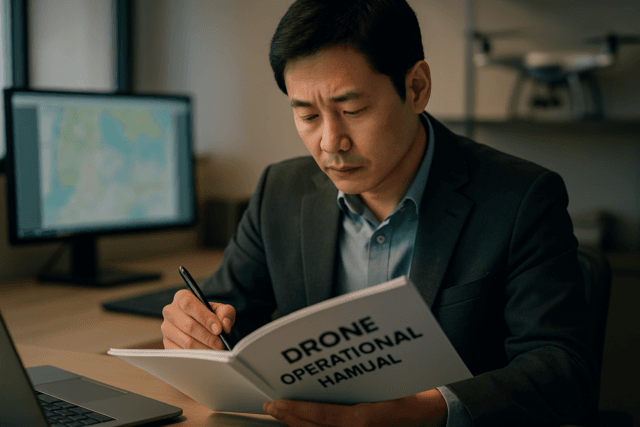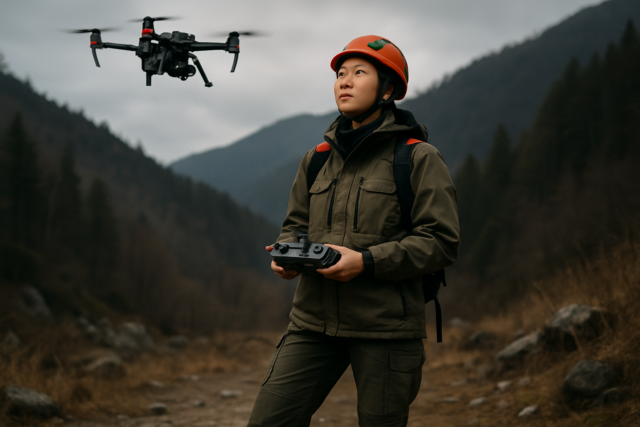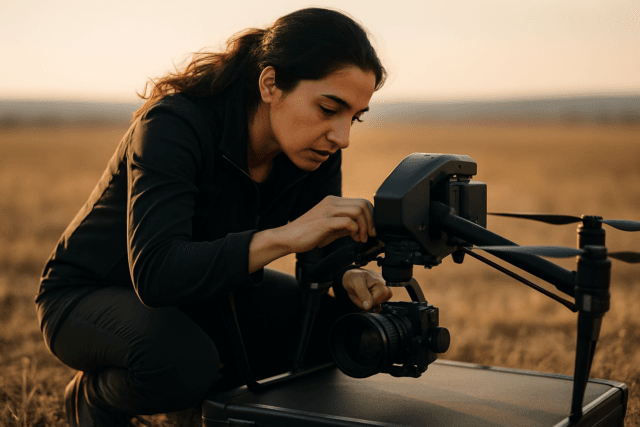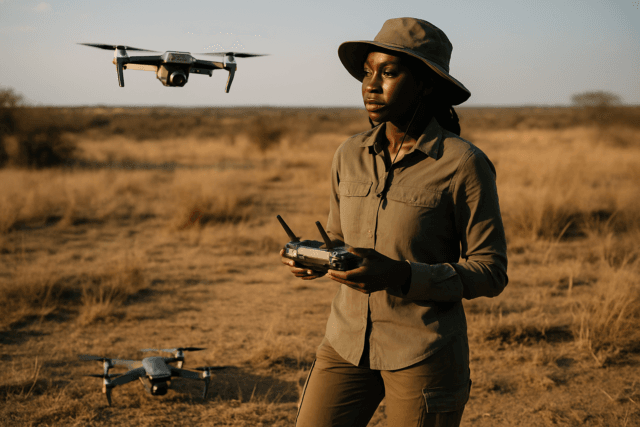The integration of Unmanned Aerial Vehicles (UAVs), commonly known as drones, into wildlife observation and conservation efforts marks a significant technological advancement in environmental monitoring. Drones offer unprecedented access to remote and difficult-to-reach areas, providing high-resolution data at lower costs and with reduced risk to human operators compared to traditional methods like manned aircraft. They are increasingly used for tasks ranging from population census and habitat mapping to anti-poaching surveillance and disaster response. However, this rapidly evolving technology also presents a complex array of ethical considerations that demand careful scrutiny to ensure responsible and effective conservation practices.
Introduction to Drones in Wildlife Observation
Drones have revolutionized the field of wildlife monitoring, providing conservationists and researchers with efficient tools for data acquisition and observation. Their ability to fly on pre-programmed or remote-controlled routes allows for systematic and cost-effective monitoring of wildlife populations and their habitats. Equipped with advanced sensors, including electro-optic and infrared cameras, drones can collect high-resolution data crucial for understanding wildlife patterns, countering poaching, and forecasting ecological changes. This technology has proven more accurate for certain tasks, such as animal counts, compared to manual methods, even in challenging conditions.
Advantages of Drone Technology in Conservation
The benefits of using drones in wildlife conservation are substantial. They offer a safer alternative for researchers, as light-aircraft crashes have historically been a leading cause of fatalities among wildlife biologists. Drones can navigate dense woodlands, utilize artificial intelligence and thermal imagery for real-time data collection, and extend daily patrol areas significantly in anti-poaching efforts. Their cost-effectiveness makes them an attractive option for conservation efforts, allowing for the monitoring of larger areas with the same human resources. Furthermore, drones can help reduce human-wildlife conflict by monitoring animals that stray into populated areas, alerting authorities, and preventing potential harm to both humans and animals.
Key Ethical Considerations
Despite their numerous advantages, the deployment of drones in wildlife observation introduces several ethical dilemmas that must be addressed to safeguard both animal welfare and human rights.
Animal Disturbance and Stress
A primary ethical concern is the potential for drones to disturb and stress wildlife, altering their natural behaviors, including migration, feeding, and breeding patterns. The noise and visual presence of drones can cause increased vigilance, flight responses, or physiological stress in animals. Different species react with varying levels of sensitivity, with some birds being particularly prone to disturbance during breeding periods, requiring higher flight altitudes to minimize impact. Research indicates that drone altitude, speed, approach distance, and noise levels significantly influence wildlife reactions. For instance, direct approaches from above or lower altitudes can induce more stress, mimicking predatory birds and triggering defensive behaviors. The long-term consequences of repeated drone exposure on wildlife remain an area requiring further research.
Data Privacy and Surveillance
The use of drones for wildlife monitoring inevitably involves collecting vast amounts of data, which can inadvertently capture images or information about human beings, particularly indigenous communities living within or near conservation areas. This raises significant privacy concerns, as drones can capture data without the knowledge or consent of those being observed, eroding traditional boundaries of private space. Ethical use necessitates balancing effective surveillance for conservation with the privacy rights of local inhabitants. There are also concerns about data security and the potential misuse of sensitive information, such as animal locations, which could be exploited by poachers or illegal wildlife traders if not properly protected. Robust data protection measures and clear guidelines are paramount to prevent such exploitation and maintain public trust.
Habitat Impact and Unintended Consequences
While drones are designed to be less intrusive than manned aircraft, there are considerations regarding their potential ecological footprint. The physical presence of a drone, even without direct interaction, can alter wildlife behavior or disturb sensitive habitats. Additionally, if drones get damaged and crash in remote areas, they could potentially harm wildlife or contaminate the environment. Understanding these impacts, especially during critical life stages like nesting or migration, is vital for responsible drone operation.
Human-Wildlife Interaction and Perception
The introduction of drones can also affect the perception and interaction between local communities and conservation efforts. A lack of transparency about drone use can lead to suspicion, distrust, and even conspiracy theories among people unfamiliar with the technology, particularly in remote areas. Engaging with affected communities and ensuring their consent and understanding of drone operations is crucial to avoid marginalization and strained relationships between conservation agencies and local populations.
Equity and Accessibility
The advanced nature and associated costs of drone technology raise questions about equitable access and benefit sharing, particularly for conservation initiatives in developing regions. Ensuring that the benefits of drone technology are accessible and applied fairly across different contexts and communities is an ethical challenge. This includes considerations of who controls the technology, who benefits from the collected data, and whether local communities are empowered to use these tools themselves.
Mitigating Ethical Risks and Best Practices
To address the ethical challenges associated with drone use in conservation, a multi-faceted approach involving regulatory frameworks, researcher training, technological advancements, and community engagement is essential.
Regulatory Frameworks and Guidelines
The development and adherence to clear regulatory frameworks and ethical guidelines are critical for responsible drone deployment. National aviation authorities often require special permits for drone use in conservation, and international coordination may be necessary for cross-border reserves. Organizations like the World Wildlife Fund (WWF) and the University of Exeter have developed “best practice” guidelines that emphasize precaution, adherence to institutional ethical rules, and awareness of local laws. These guidelines often recommend maintaining respectful distances from wildlife, avoiding hovering or pursuing animals, and being mindful of nesting and breeding seasons.
Researcher Training and Protocol Development
Proper training for drone operators in animal ethics, flight procedures, and data handling is paramount. Researchers should prioritize studies that quantify disturbance to better understand animal reactions and develop species-specific guidelines. Protocols should include launching and landing drones away from animals, flying at appropriate altitudes (e.g., generally above 30-80 meters, with higher altitudes for sensitive species or during breeding periods), and using steady flight patterns to minimize visual and auditory impact. Opting for quieter drone models also helps reduce stress on wildlife.
Technological Advancements for Minimizing Impact
Ongoing technological advancements play a crucial role in mitigating ethical risks. Engineers and scientists are continuously developing quieter drone designs and improving thermal and long-distance focal-point cameras to monitor animals with minimal intrusion. The integration of artificial intelligence (AI) can further enhance efficiency and precision, allowing for more autonomous and less intrusive data collection. Furthermore, robust encryption algorithms are being developed to safeguard sensitive wildlife data from unauthorized access and misuse by poachers.
Public Engagement and Communication
Transparency and open communication with local communities and the public are vital. Organizations should consult local communities before flying drones, respect local rules, and ensure that images of people and culturally sensitive sites are handled with care. Sharing data and findings from drone footage with affected communities can build trust and foster collaborative conservation efforts. This approach ensures that conservation efforts are not only technologically advanced but also socially responsible and inclusive.
Conclusion: Balancing Innovation and Responsibility
The use of drones for wildlife observation presents a powerful tool for conservation, offering unparalleled capabilities for data collection, monitoring, and anti-poaching efforts. However, these technological advantages come with significant ethical responsibilities. Addressing concerns related to animal disturbance, data privacy, habitat impact, and social implications is crucial for the sustainable and responsible integration of drones into environmental monitoring. By prioritizing ethical guidelines, implementing robust data management, fostering community engagement, and continuously refining drone technology and operational protocols, conservationists can harness the full potential of UAVs while safeguarding the well-being of wildlife and respecting human rights. The ultimate goal is to achieve a harmonious balance where innovation serves as a powerful ally in the preservation of our planet’s invaluable biodiversity.

